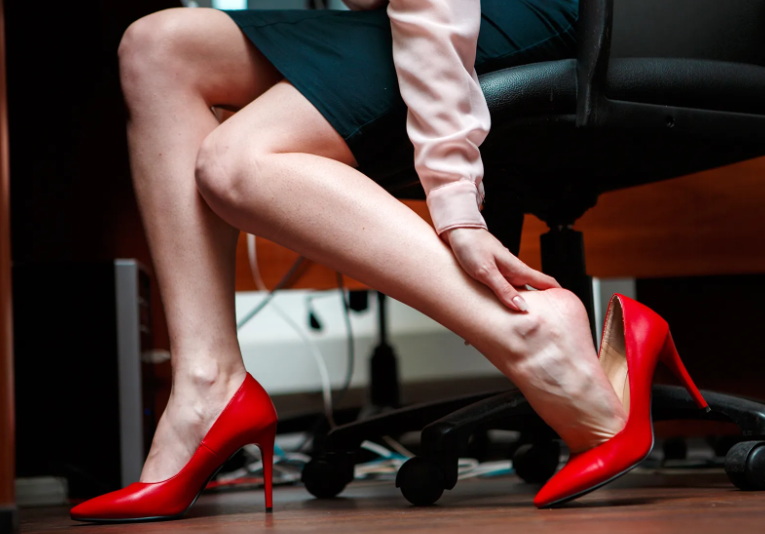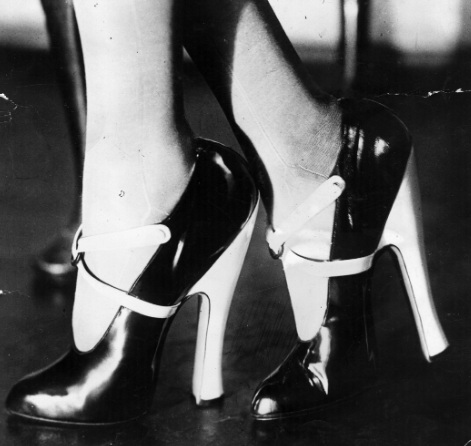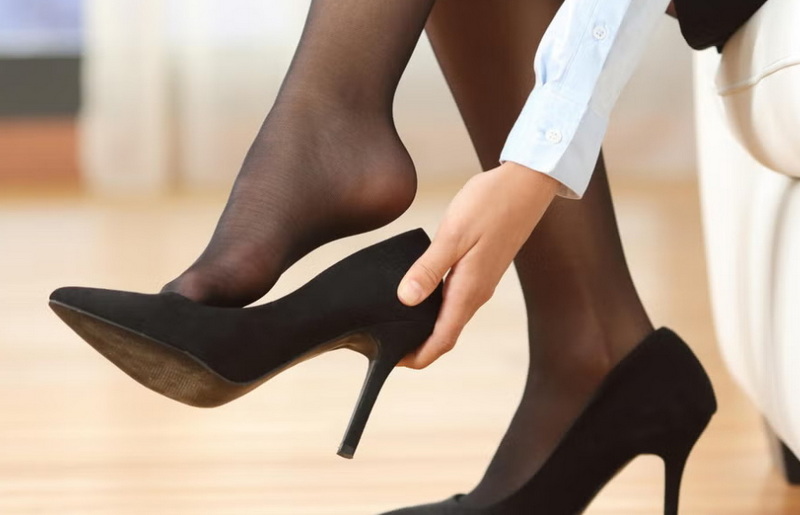Content Menu
● The Historical Evolution of High Heels
● The Psychology Behind High Heels
>> Confidence Boost
>> Symbol of Power and Status
● The Aesthetic Appeal
>> Enhancing Physical Attractiveness
>> Fashion and Self-Expression
● The Biological Perspective
● Cultural Norms and Expectations
>> Societal Pressure
>> Media Influence
● The Health Considerations
● The Future of High Heels
● Conclusion
● FAQ
>> 1. Are high heels bad for your feet?
>> 2. How can I make wearing high heels more comfortable?
>> 3. What is the ideal heel height for everyday wear?
>> 4. Can men wear high heels?
>> 5. How do I walk properly in high heels?
● Citations:
High heels have been a staple in women's fashion for centuries, captivating wearers and onlookers alike with their allure and mystique. From the runways of Paris to the boardrooms of New York, these elevated shoes have become synonymous with femininity, power, and style. But what drives women to don these often uncomfortable footwear choices? Let's delve into the fascinating world of high heels and explore the multifaceted reasons behind their enduring popularity.

The Historical Evolution of High Heels
High heels have a rich history that dates back to ancient civilizations. Surprisingly, they were initially worn by men in Persia during the 10th century as a practical solution for horseback riding[1]. Over time, the concept of elevated footwear spread to Europe, where it became a symbol of status and power among both men and women.
By the 17th century, high heels had become firmly associated with femininity and fashion in Western culture. The transformation from practical footwear to a fashion statement was complete, and high heels began to take on the forms we recognize today.
The Psychology Behind High Heels
Confidence Boost
One of the primary reasons women wear high heels is the confidence boost they provide. The added height and altered posture can create a sense of empowerment and self-assurance[7]. This psychological effect is not just about appearing taller; it's about the way high heels change a woman's gait and overall presence.
Symbol of Power and Status
High heels have long been associated with power and status. In many professional settings, they are seen as part of a polished, authoritative look[7]. The added height can literally and figuratively elevate a woman's stature in the workplace, potentially influencing perceptions of competence and leadership ability.
The Aesthetic Appeal
Enhancing Physical Attractiveness
High heels are often credited with enhancing a woman's physical attractiveness. They can create the illusion of longer, more toned legs and a more curvaceous figure[1]. This effect is due to the way high heels alter the body's posture, emphasizing certain features that are traditionally considered attractive.
Fashion and Self-Expression
For many women, high heels are an essential part of their fashion repertoire. They offer a way to express personal style and creativity[7]. From classic pumps to avant-garde designs, high heels come in an endless variety of styles, allowing wearers to make a unique fashion statement.

The Biological Perspective
Interestingly, scientific research has explored the biological aspects of high heel wear. A study published in Frontiers in Psychology suggests that high heels influence women's attractiveness by affecting their lumbar curvature[2]. This finding provides an evolutionary perspective on the appeal of high heels, linking them to mate selection processes.
Cultural Norms and Expectations
Societal Pressure
It's important to acknowledge that societal expectations play a significant role in women's choice to wear high heels. In many cultures, high heels are considered the norm for formal occasions, professional settings, and even everyday wear[9]. This cultural pressure can influence women's footwear choices, sometimes leading to discomfort or health issues.
Media Influence
The media, including fashion magazines, movies, and advertising, often portray high heels as a symbol of femininity and sophistication. This constant exposure can shape perceptions and create a desire to emulate the glamorous images presented[7].
The Health Considerations
While high heels offer numerous aesthetic and psychological benefits, it's crucial to consider their potential health impacts. Prolonged wear of high heels can lead to various foot problems, including bunions, hammertoes, and plantar fasciitis[10].
Experts recommend limiting high heel wear to special occasions and opting for lower, more comfortable heels for everyday use. It's also advisable to perform foot exercises and stretches to mitigate the potential negative effects of high heels[10].
The Future of High Heels
As society evolves, so does the perception and design of high heels. Many brands are now focusing on creating more comfortable and foot-friendly high heel options[10]. This trend towards "comfort heels" reflects a growing awareness of the importance of foot health and the desire to balance fashion with well-being.
Conclusion
The reasons why women wear high heels are as diverse and complex as the women themselves. From boosting confidence and enhancing attractiveness to conforming to societal norms and expressing personal style, high heels serve multiple purposes in modern society. While they continue to be a popular fashion choice, it's important for wearers to be aware of both the benefits and potential risks associated with these elevated shoes.
As we move forward, the evolution of high heel design and a growing emphasis on comfort may help address some of the health concerns while maintaining the allure and empowerment that high heels provide. Ultimately, the choice to wear high heels should be a personal one, based on individual preferences, comfort, and lifestyle needs.

FAQ
1. Are high heels bad for your feet?
While high heels can cause foot problems with prolonged wear, occasional use is generally not harmful. It's important to choose well-fitting shoes and limit the duration of wear to minimize potential issues.
2. How can I make wearing high heels more comfortable?
To increase comfort, consider using gel insoles, choosing shoes with a lower heel height, and opting for styles with wider toe boxes. Taking breaks to stretch your feet and calves can also help.
3. What is the ideal heel height for everyday wear?
For everyday wear, a heel height of 1-2 inches is generally considered comfortable and less likely to cause foot problems. However, this can vary depending on individual foot shape and personal comfort levels.
4. Can men wear high heels?
Historically, men have worn high heels, and in contemporary fashion, some designers create high-heeled shoes for men. While less common, there are no inherent restrictions on men wearing high heels.
5. How do I walk properly in high heels?
To walk properly in high heels, maintain good posture, take smaller steps, and walk heel to toe. Practice in a safe environment before wearing them for extended periods or on uneven surfaces.
Citations:
[1] https://www.joesfootwear.com/blog/why-do-women-wear-high-heels.html
[2] https://www.frontiersin.org/journals/psychology/articles/10.3389/fpsyg.2017.01875/full
[3] https://www.istockphoto.com/de/bot-wall?returnUrl=%2Fde%2Fphotos%2Fhigh-heels
[4] https://www.youtube.com/watch?v=xZxmMQCZsu4
[5] https://fashionisers.com/2019/04/02/questions-about-buying-wearing-high-heels/
[6] https://digitalcommons.bucknell.edu/cgi/viewcontent.cgi?article=2979&context=fac_journ
[7] https://footpetals.com/blogs/foot-petals-blog/why-do-women-wear-high-heels
[8] https://www.shoezone.com/Blog/heels-your-questions-answered
[9] https://pmc.ncbi.nlm.nih.gov/articles/PMC5537921/
[10] https://www.plymouthfoot.com/high-heels-fashion-and-foot-health/

















